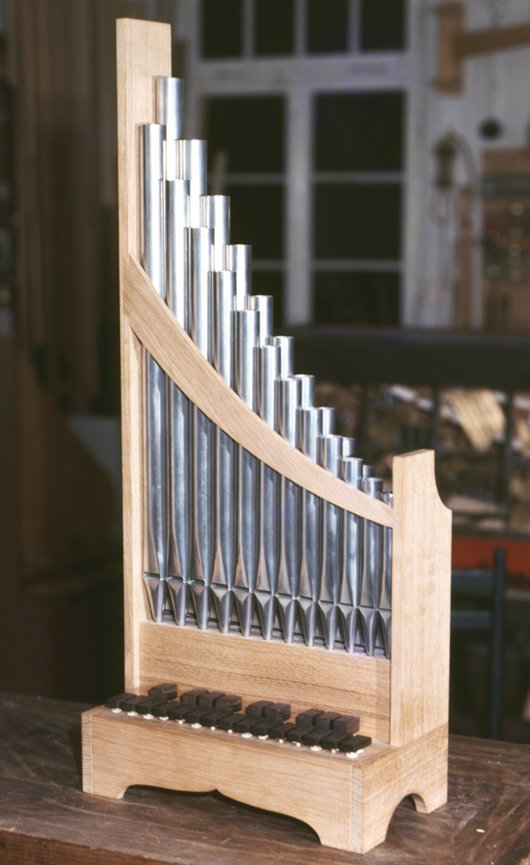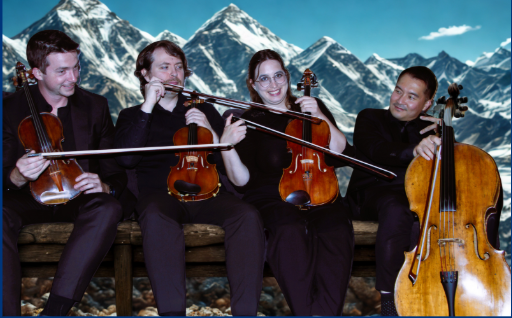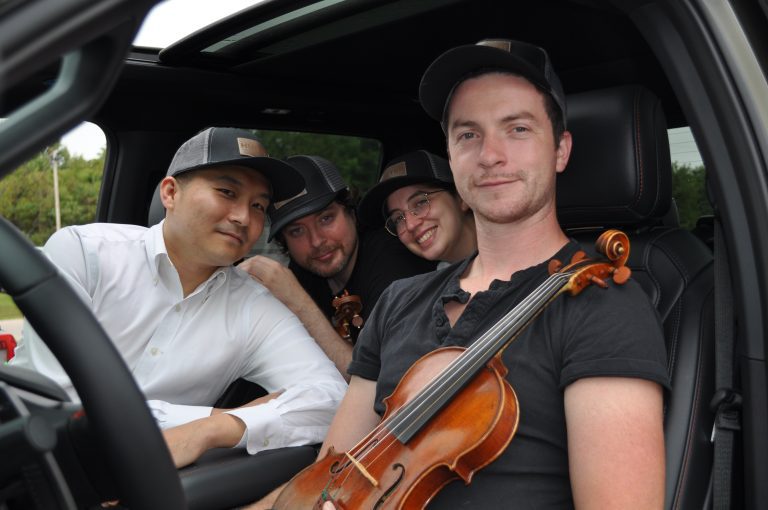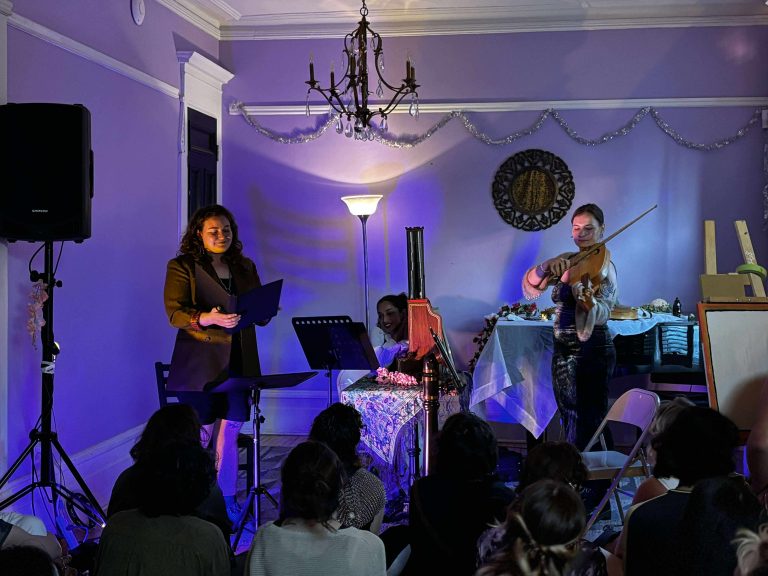What’s a Vielle? What’s an Organetto?
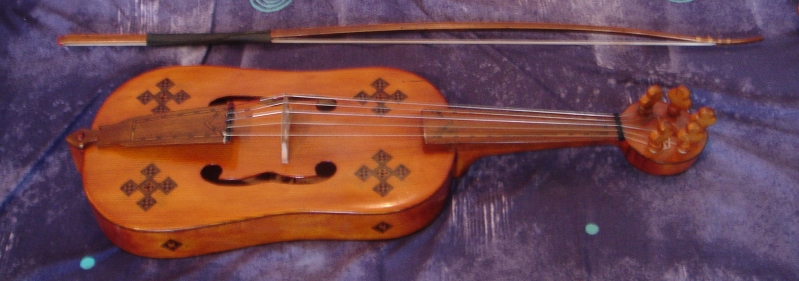
You may have heard that QSCM will be presenting MEDIEVAL MUSIC for the first time ever on September 1st at 4 pm at the Stock and Row Cidery in Bloomfield. This is the first event of the 2025 All Terrain Tour, and features Montreal-based ensemble COMTESSA in “Before Chamber Music”, all about the music that came before Haydn, Mozart, and the great string quartet writing that followed.
This performance will showcase Len Torrie on voice, Isabelle Douailly-Backman on the vielle, and Maria Gajraj playing the organetto. We’re all very familiar with the voice, but what exactly is a vielle anyway? How is an organetto different than a regular pipe organ that we see in big churches? Read on to find out more!

The image above is a vielle. This instrument was popular between in the 13th and 15th centuries – you’ve probably seen it in pictures of medieval tapestries! You can see that it sort of looks like a violin or viola, except it’s a bit more oval-shaped than its modern cousins. The vielle can have 3-5 strings, compared to modern violins and violas which always have 4 strings. You many have also noticed that the vielle bow is also quite different from the bows that we use today with a much curvier stick and a longer tip.
Another notable difference between the vielle and modern violins and violas is the peg box at the top of the instrument. The image to the right is the scroll found on most modern classical string instruments. Notice how the tuning pegs stick out from the side of the scroll. Instead of a curly scroll, the vielle has a leaf-shaped peg box with pegs that face frontwards instead of on the side of the peg box, as can be seen in the image further above.
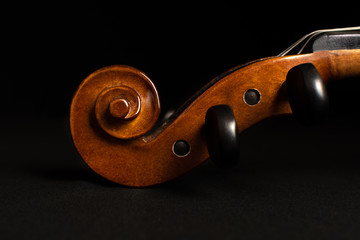
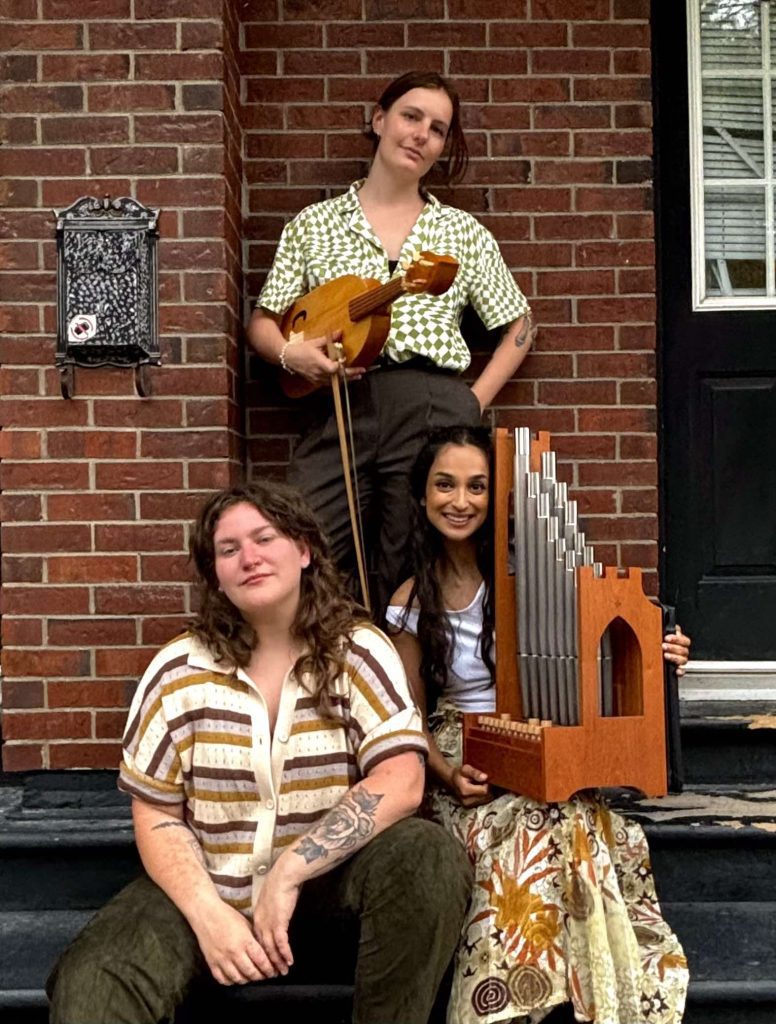
Now, what about an organetto? A lot of us are familiar with the modern pipe organ from seeing it in churches. Of course, once a pipe organ is installed in a building, it usually can’t be moved from its place very easily! Luckily, there’s a more portable version of this instrument, the organetto. You can see Maria holding it in this right of this Comtessa group photo. To play the organetto, the musician moves a set of bellows (the folded material that presses air into the instrument, similar to an accordion) at the back of the instrument, while their other hand plays a small keyboard at the front.
This is a more close-up photo of an organetto. It really is a miniature version of a pipe organ!
To see both of these instruments up close and in action, join us at Monday Sept 1 at 4pm, Stock and Row Cidery, Bloomfield. ADMISSION FREE, Donations welcome! Spend your LABOUR DAY with us!
“Before Chamber Music” with COMTESSA
MON Sept 1 (Labour Day) 4 pm
Stock and Row Cidery Tasting Room, 114 Gilead Rd, Bloomfield ADMISSION FREE, Donations welcome
